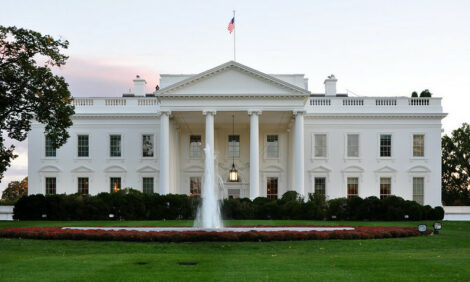



Improved Governance Structure For NCBA
US - – The National Cattlemen’s Beef Association (NCBA) has appointed three groups to continue development of an improved governance concept, which NCBA’s Board of Directors approved 201-13 at its Annual Meeting in San Antonio January 30, 2010.The three working groups are:
- Bylaws, Policies and Procedures
- Investment Schedules
- Transition Timeline
“At the San Antonio meeting, the Governance Task Force received a lot of producer feedback, and they revised their governance recommendation based on this feedback. As a result, the Board overwhelmingly voted to move forward with the governance concept. We continue this producer-driven process with these working groups,” said Steve Foglesong, president, NCBA, and producer from Astoria, Illinois.
These groups are beginning their work late March and early April. Working Group recommendations will be sent to NCBA’s Board of Directors by the beginning of July for the members to review prior to the summer Board meeting August 1, 2010, in Denver.
Each working group includes a diverse group of producers and executives from state organisations. Members of the groups were appointed by NCBA’s officers based on recommendations the officer team received from state beef councils and state cattlemen associations.
“The goal of an improved governance structure is clear: a stronger NCBA. Producers deserve a national organization that is built to fight and win the battles that threaten agriculture and rural America,” said Mr Foglesong.
“Changes to our governance structure will improve the way NCBA builds beef demand – domestically and internationally – to fuel producer profitability and the way NCBA protects producers’ freedom to operate without burdensome government intervention,” said Bill Donald, president-elect, NCBA, and producer from Melville, Montana.
The approved governance model creates:
- Committees open to all NCBA members, members of the Federation of State Beef Councils and members of state cattlemen association affiliates, as well as invited guests. Currently, producers are appointed to committees. This change is more inclusive, creating greater producer voice in demand-building programmes and organisational policy.
- A House of Delegates, not unlike NCBA’s current board, which will be charged with developing recommendations for Board consideration. The current governance model creates a House of Delegates with 250 votes. Of those votes, 106 will go to State Beef Councils, 106 to state affiliates, and 38 to industry and breed organisations, as well as the allied industry/product council.
- A Board of Directors comprised of 29 members, 26 of who are elected by the House of Delegates. This body will be able to respond more quickly to producer direction than NCBA’s current 274-member Board.
- And a Federation of State Beef Councils, which will continue to elect its chair, vice chair and its members to the Beef Promotion Operating Committee.
Producers who have fiduciary responsibility to the checkoff will continue to make decisions, on behalf of all producers, about checkoff resources:
- Producers who sit on State Beef Council boards will continue to decide annually whether to voluntarily invest in the national plan to build and protect beef demand.
- Producers appointed to the Beef Promotion Operating Committee – 10 from the Cattlemen’s Beef Board and 10 from the State Beef Councils – will continue to decide annual checkoff contracts.
Regardless of NCBA’s governance structure, no checkoff dollars will be used to lobby, and a third-party audit system will remain in place to make sure the law is followed.
“We are the checkoff’s biggest supporter. We work hard every day to build and defend beef demand and are committed to a strong and effective Beef Checkoff Programme,” said Mr Foglesong.
“The greatest benefit to these changes is that more producers will be involved in setting the course for NCBA and all aspects of their beef industry,” said Mr Donald.
TheCattleSite News Desk


